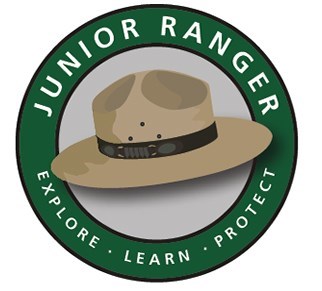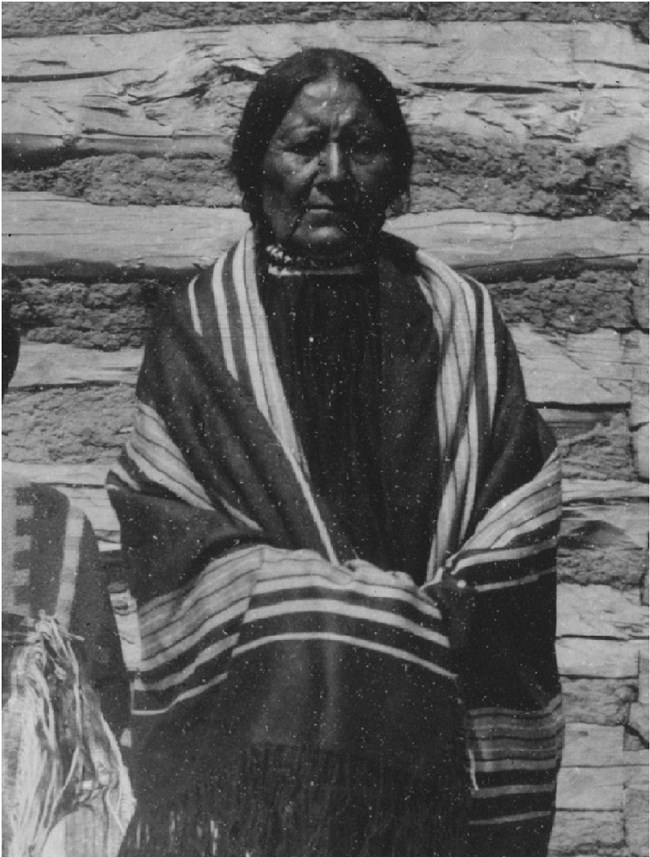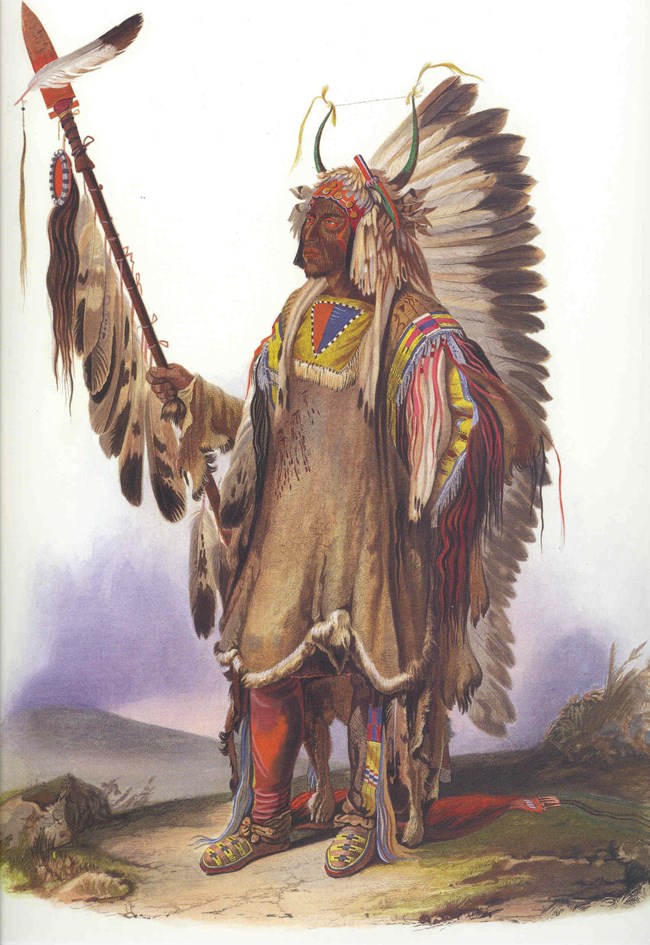
Welcometo the Knife River Indian Villages National Historic Site's Online Junior Ranger program! Instructions:There are 2 historical subjects in this program: Buffalo Bird Woman and Four Bears. Click on either of their links below to learn their story and history! HistoryWho lived here?The Mandan, Hidatsa, and Arikara lived in separate villages along the Missouri River. Remnants of three Hidatsa villages are preserved within the park. Why a National Historic Site?In 1974, Knife River Indian Villages was formally recognized as a National Historic Site. It has some of the best preserved earthlodge depressions and is on the Lewis and Clark Trail! What did they live in?Earthlodges were the homes to these tribes. The women built these structures made of earth, logs, and grass which protected them from the harsh elements on the North Dakota prairie. These homes sheltered 15 to 20 people per earthlodge! How did they live?Daily life for the tribes included hunting and gathering food. Bison was an important part of their diet, but they were also farmers that raised corn, beans, squash, sunflowers, and tobacco. The women cared for the crops while the men hunted, defended the village, and traded with other tribes. Let's Get Started!Choose from the time periods listed below! You will only have to complete one section to get the badge! 
1. Travel to 1839-1932 with Buffalo Bird Woman!

2. Travel to 1784-1837 with Four Bears!
|
Last updated: October 19, 2020
